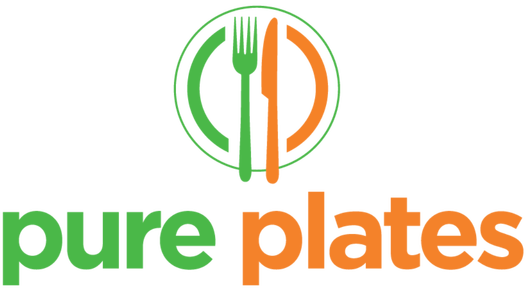How to Prevent Osteoporosis with Pure Plates
Osteoporosis is a condition that affects our bones, causing them to be brittle and to fracture easily. As we age, our bones can naturally begin to become more fragile and prone to breaking due to many factors, including age, diet, lack of exercise, and different lifestyle behaviors.
Similar to the rest of our body, our bones are constantly being broken down and restored by specialized cells. Due to the different factors we mentioned above, this process can get out of balance where the new bones being made don’t keep up with the old broken down bones. In this article we want to share with you the key ways to reduce risk of bone fractures and prevent osteoporosis.
Eat Calcium-Rich Foods
Making sure that you are getting adequate amounts of calcium in your diet is essential for bone health and osteoporosis prevention. One important thing to note is that when our blood lacks its needed calcium, the only other place to get it from is our bones. This becomes problematic in the long run, because our bones are constantly getting stripped of their calcium to supply the rest of the body leading to osteoporosis.

There are many food options that are calcium-rich to help you preserve your bones and keep them in good health. The recommended upper limit for calcium per day is 2,500mg for adults aged 19-50 and 2,000mg for older adults aged over 50. Some calcium-rich foods include:
-
Dairy products, such as milk and cheese
-
Spinach
-
Almonds
-
Sardines
-
Calcium-fortified foods, such as cereals and orange juice
These are just a few of the many options out there that contain calcium. Make sure to check out Pure Plate’s meal plan services for a nourishing yet delicious menu containing a variety of nutrient-dense foods, including calcium!
Exercise more Frequently
Before we dig deeper into this topic, we first want to address with you the concept of bone mineral density, otherwise known as BMD. Our bones are made up of large amounts of minerals to keep them strong and dense- this is known as BMD.
The amount of minerals within our bones, AKA our bone mineral density, gradually decreases after we hit 30 years of age. Studies have shown a decrease in bone density due to lack of physical activity in humans. On the other hand, these studies have also shown an increase in BMD with physical activity, especially seen in athletes who are strength-trained in comparison with those who are not.

With this information in mind, we can now understand the importance of exercise to prevent osteoporosis from occurring. Weight-bearing and resistance training in both children and adults are essential to help produce strong bones that don’t break easily!
Sunlight and Vitamin D
Did you know that calcium and vitamin D work hand in hand to protect our bones? In order for our body to absorb calcium, vitamin D is needed to allow for this process to take place. With this in mind, we can now understand why calcium alone is not enough.
The major way we can obtain vitamin D is through sunlight, however there are guidelines for the safe amount of sunlight exposure to get sufficient amounts of vitamin D without overexposing yourself to UV rays. On the other hand, people living in geographical areas that lack sun in the winter struggle to get enough vitamin D overall.

Luckily, there are foods that you can include in your diet that contain vitamin D to be obtained during colder months, such as:
-
Eggs
-
Fatty fish, such as salmon and mackerel
-
Liver
-
Fortified milks
Pure plate’s delicious and flavorful Zesty Deviled Eggs are a great way to get an extra boost of vitamin D through the diet to prevent osteoporosis!
The bottom line is…
As we’ve discussed so far, you can recognize that osteoporosis mainly occurs as a result of different diet and lifestyle behaviors. Maintaining a varied and balanced diet that includes both calcium and vitamin D, in addition to regular exercise are all key to reduce the degree of bone loss and prevent osteoporosis as you age.

